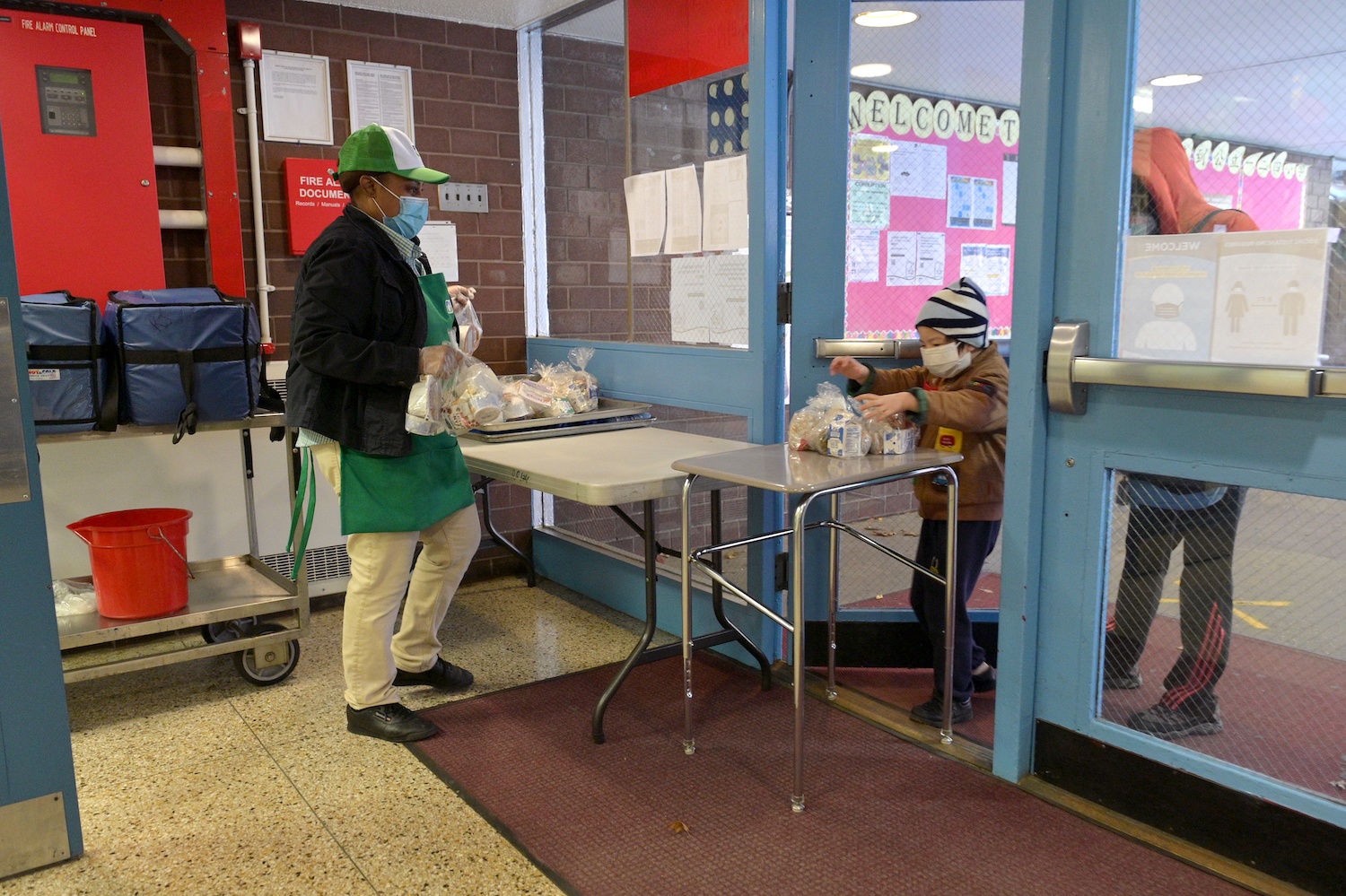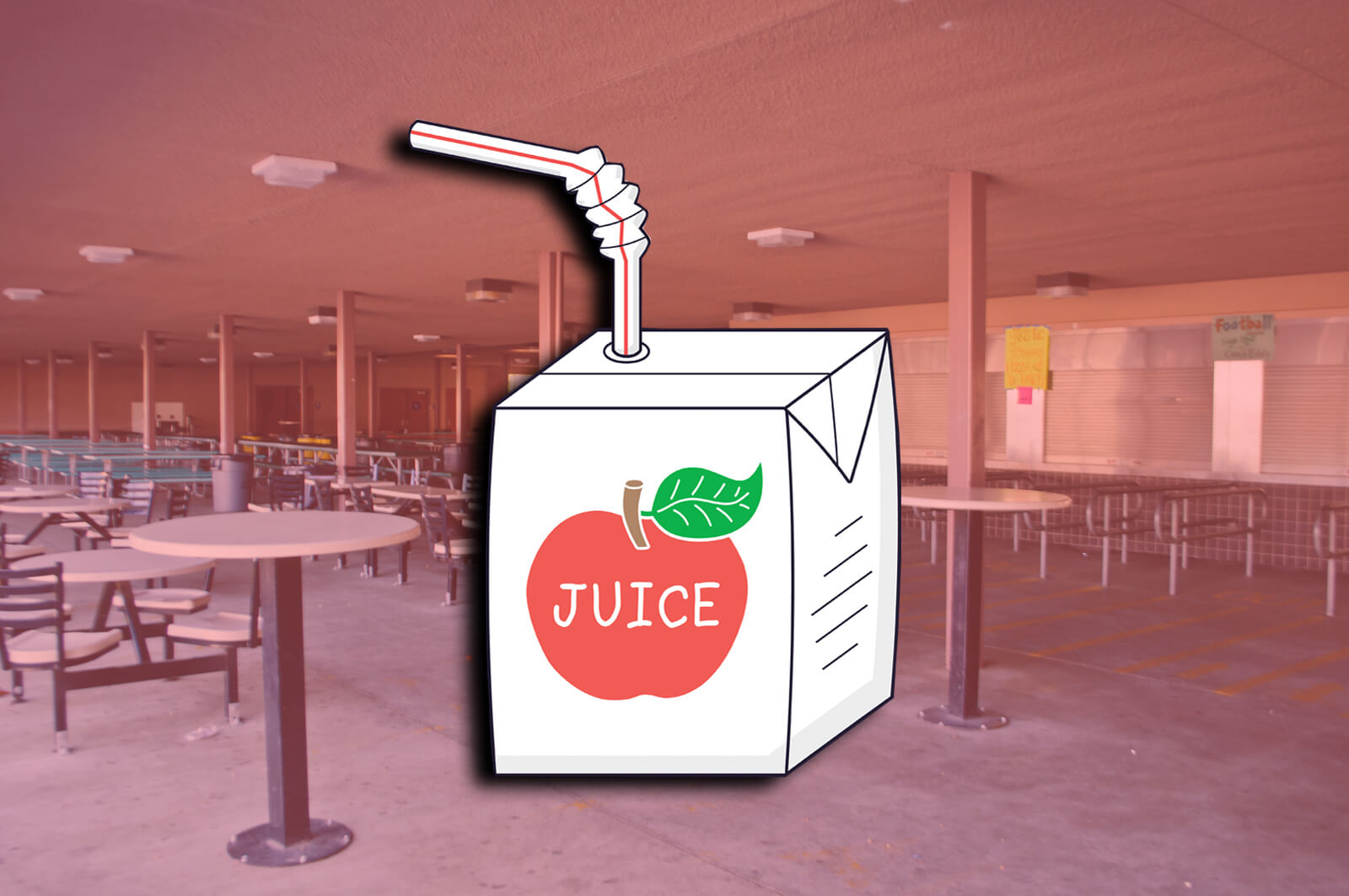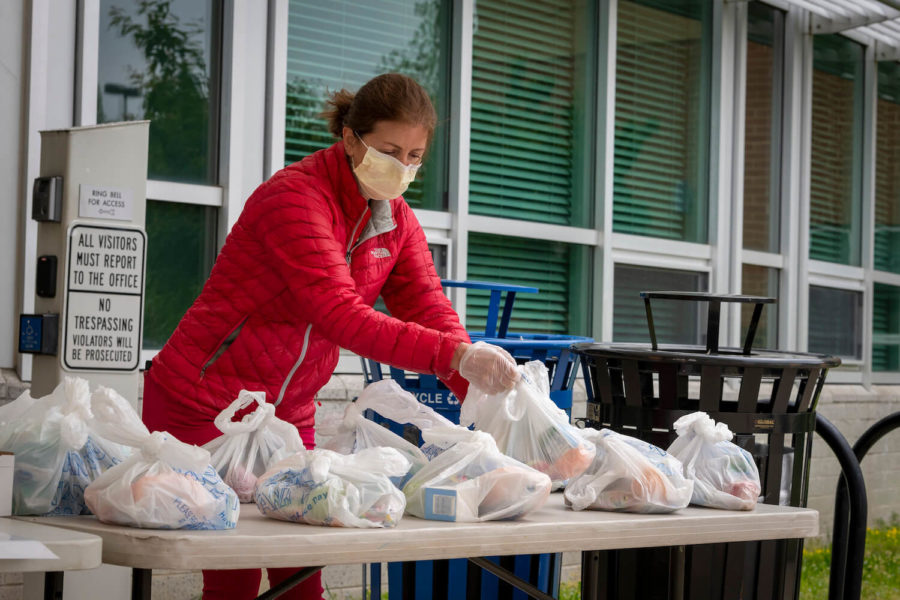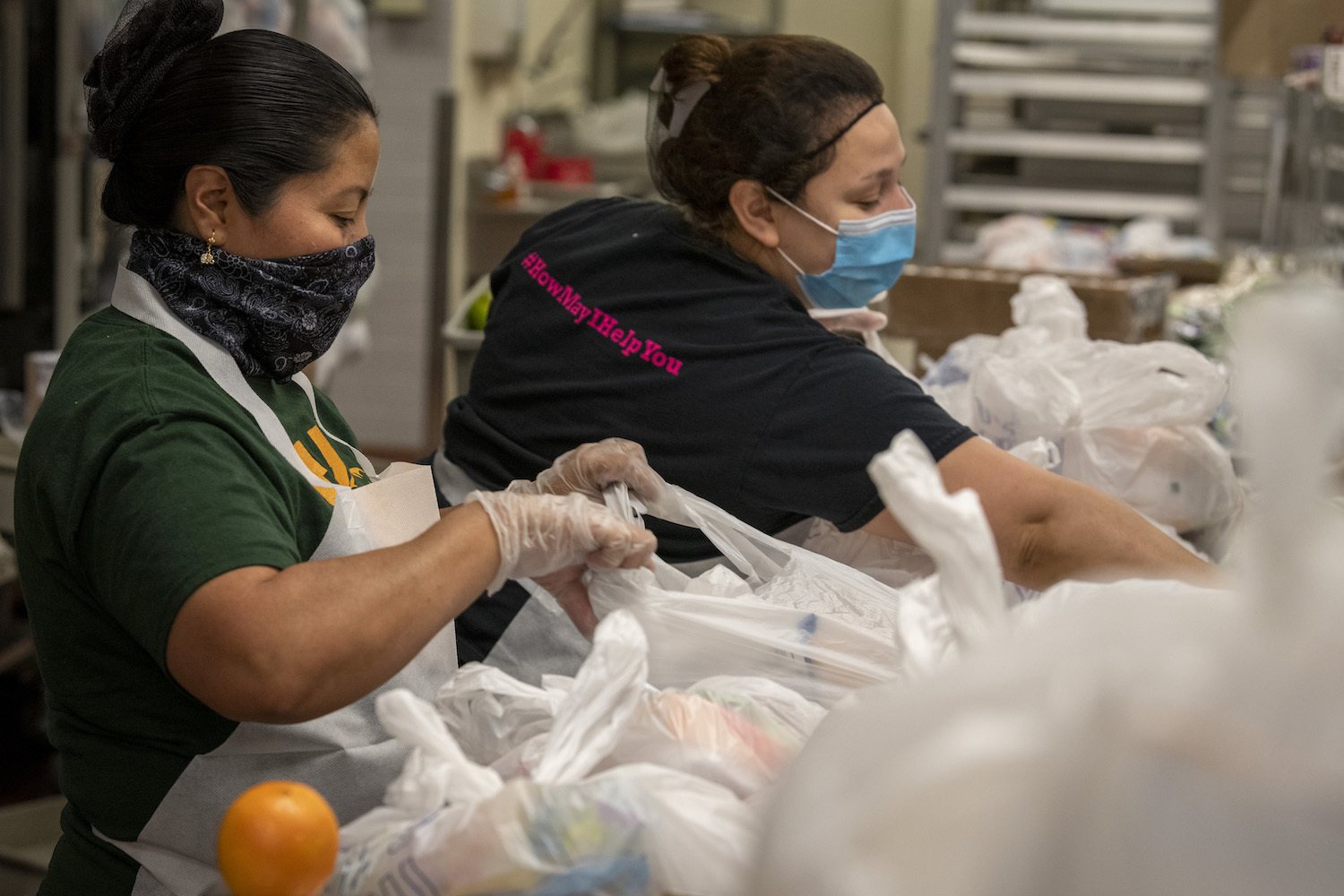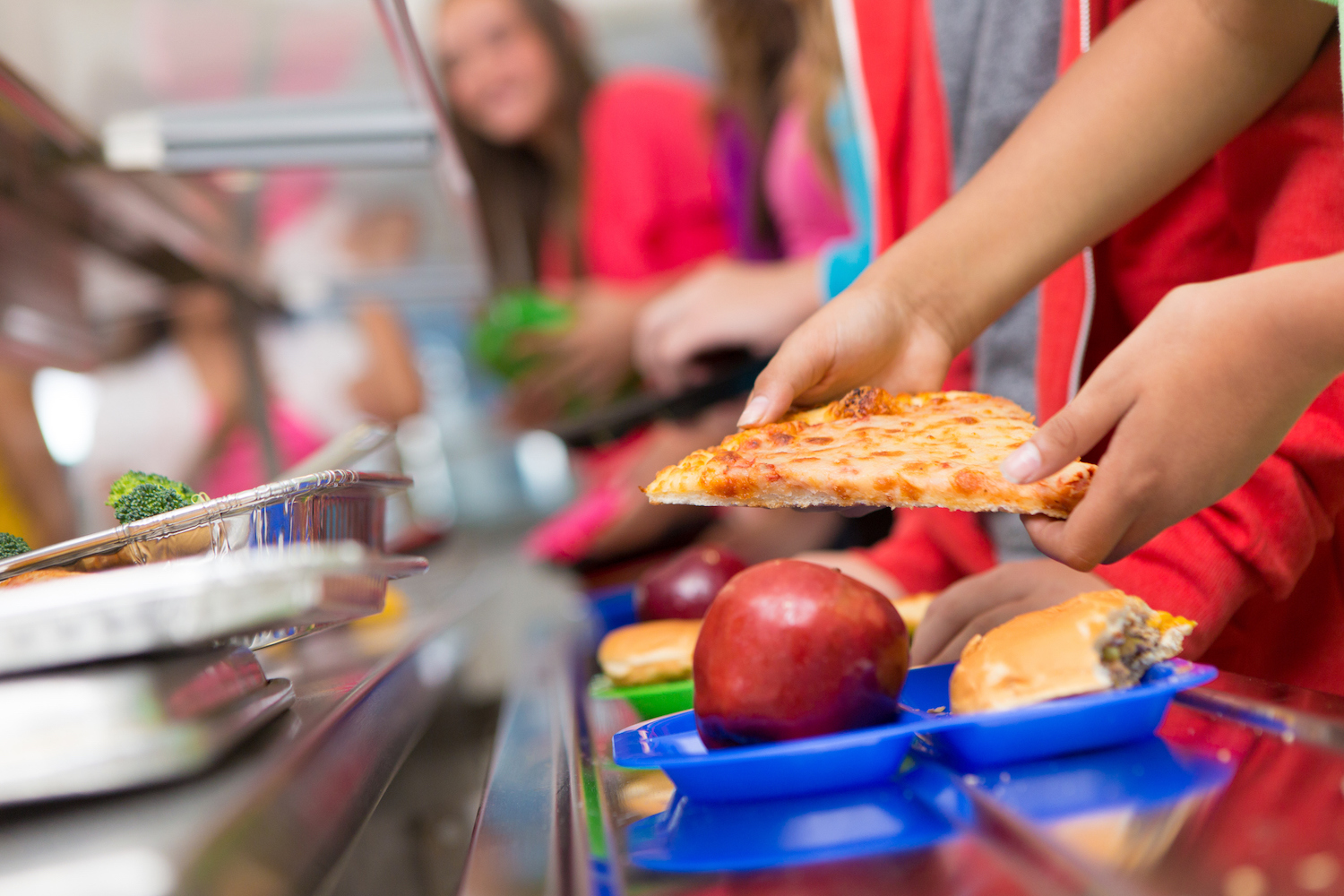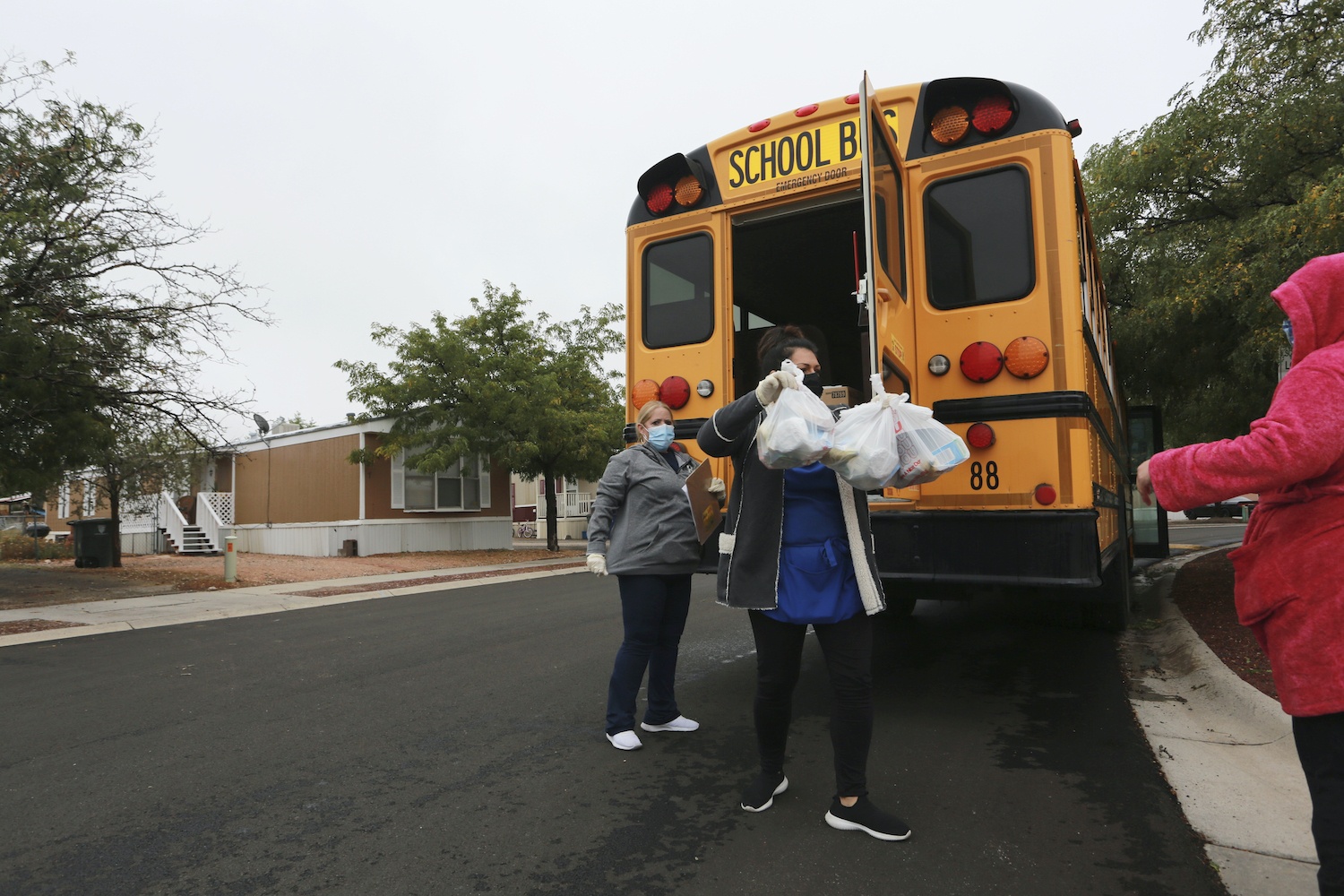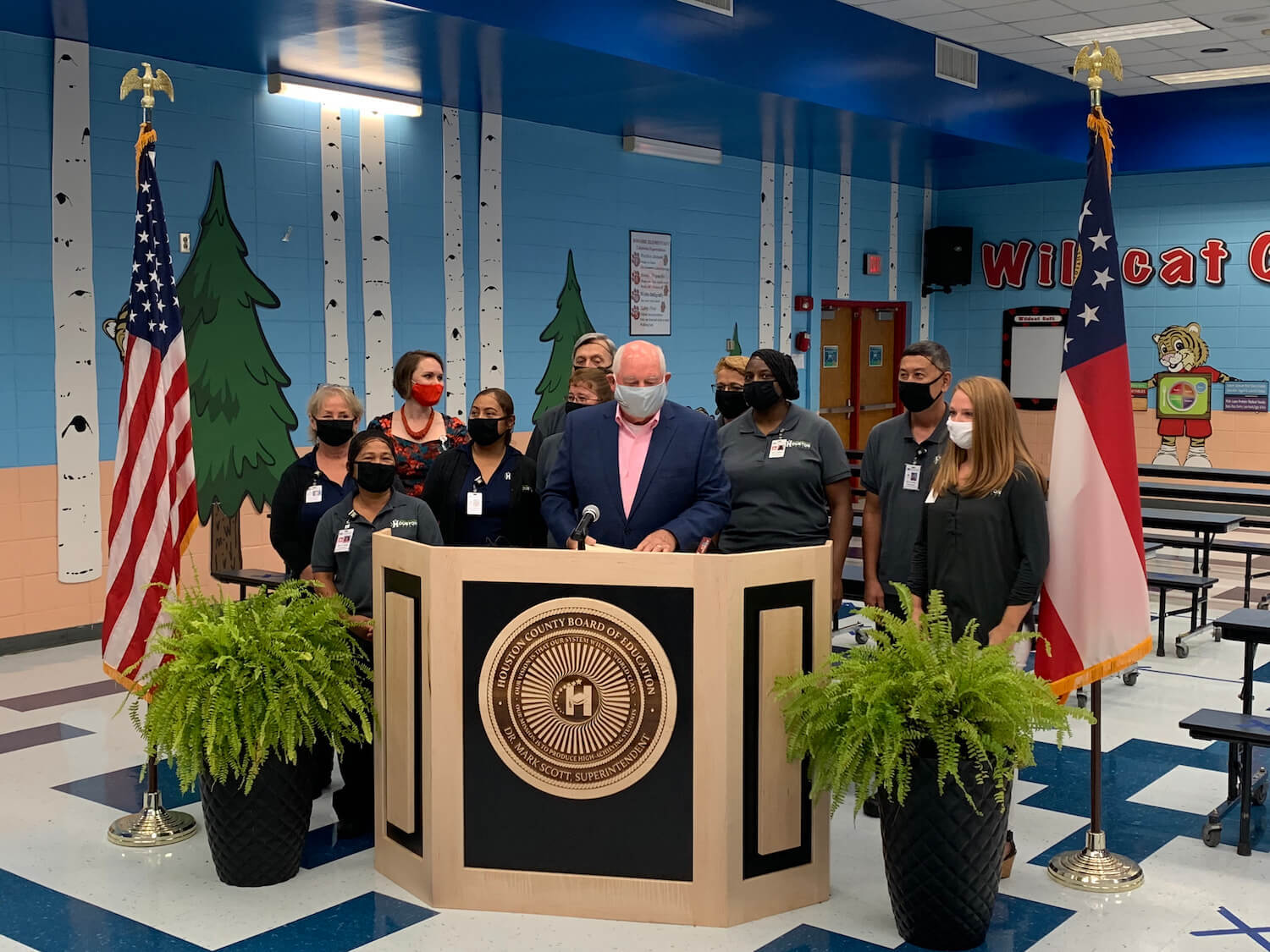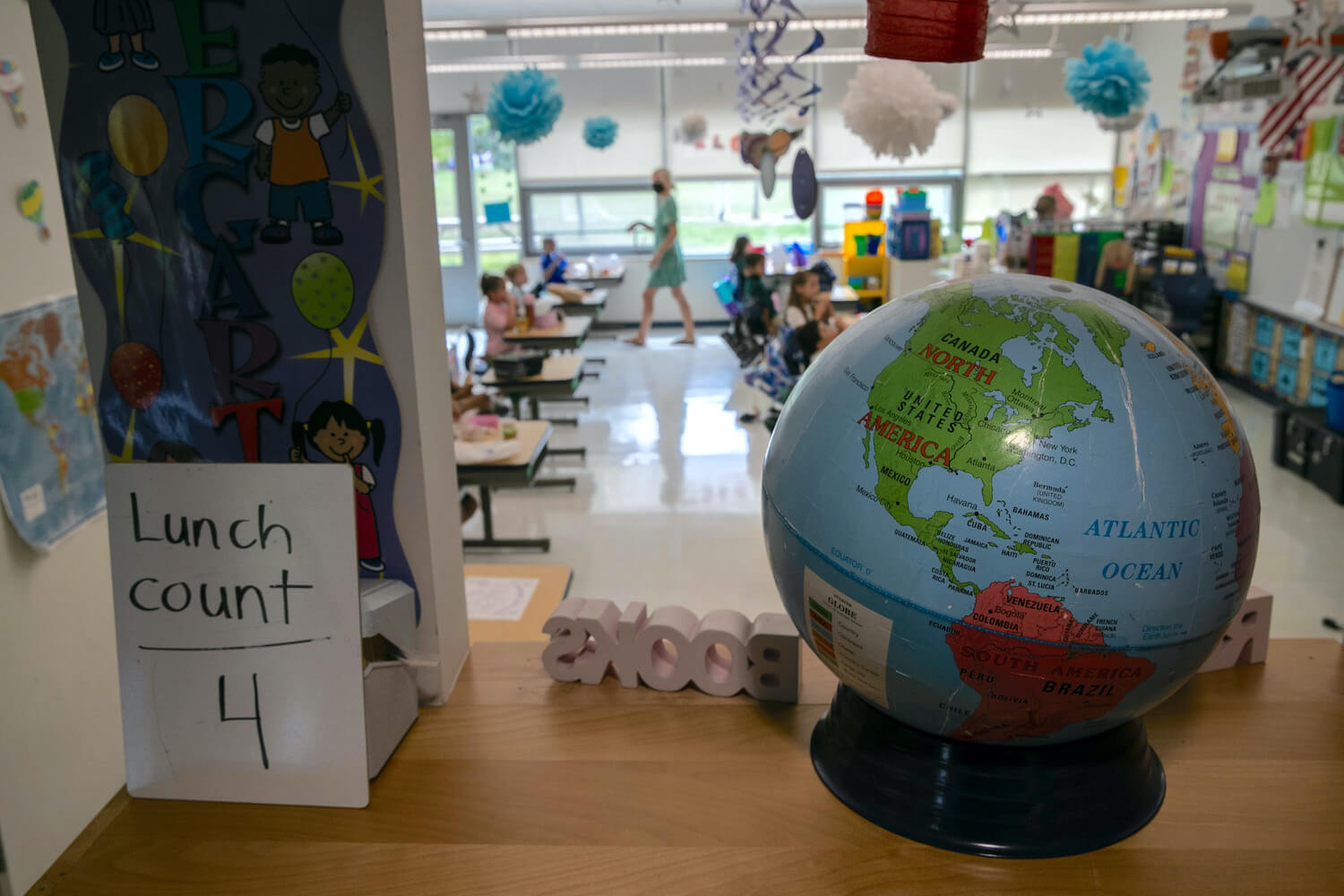
John Moore/Getty Images
Schools that serve free breakfast and lunch to all kids spend up to 67 cents less per meal than schools that don’t, according to a new analysis of USDA data. The findings could bolster the case for universal meals post-pandemic.
The Department of Agriculture (USDA) on Tuesday announced it would extend waivers allowing schools to serve free breakfast and lunch to all children through the end of September, maintaining what has become a de facto universal school meals program. This is the fourth time these waivers have been extended—a sign of the prolonged disruption that the ongoing public health crisis has wrought on nutrition programs.
Anti-hunger advocates and nutrition officials applauded the move, and made renewed calls on policymakers to keep school breakfast and lunch free even after the Covid-19 public health emergency ends. The bulk of their argument is that doing so would increase access to nutritious food, reduce stigma, and cut down paperwork for schools—advantages that are all the more welcome during a crisis that has led to increased unemployment and food insecurity. Now, newly published research is also finding that universal free meals could also help schools save money.
Let’s back up a bit: Before the pandemic was declared, USDA only permitted some schools to serve meals to all kids at no cost, under a program called the Community Eligibility Provision (CEP). To qualify, a school’s student body had to meet a high poverty threshold. As it turns out, this model might be helping schools nutrition programs become more cost efficient. In a paper published last month, public health and food policy researchers found that CEP schools tended to see lower per-meal costs, possibly due to higher participation rates that helped distribute fixed expenses across a larger group of kids.
“The schools with universal free meals were able to serve meals at a lower cost while maintaining the same nutritional quality.”
“Let’s say somebody needs to make a pot of pasta,” said Michael Long, a study author and assistant professor of community health at George Washington University. “[School food services] can dump in another package of pasta, but it’s still the same giant pot, and it’s still the same amount of time to boil it …. So if they could get 10, 20, 30 more kids eating from that same pot of pasta, they would drop that per student cost of pasta because the labor would stay the same and there’d be marginal changes in food costs and other related costs.”
Specifically, Long and their co-authors found that schools participating in CEP spent 67 cents less per lunch, compared to schools that qualify for CEP, but for whatever reason did not opt into the program. They also found that those same schools spent 58 cents less per breakfast. Included in the study’s full accounting of costs were food, labor, and the administrative support needed to keep food service programs running. Importantly, the healthiness of meals didn’t vary.
“The schools with universal free meals were able to serve meals at a lower cost while maintaining the same nutritional quality,” said Long. (Researchers observed healthiness via what’s known as the Healthy Eating Index, a measure that assigns diet quality scores to different meals.
“Reimbursement rates that we have are pretty low, especially with what happened last year when inflation rates were much higher than historical rates and costs increased due to Covid-19. It’s just a challenge.”
The research was conducted on a large batch of nationally representative data collected by USDA about how school food programs operate nationwide, including through surveys with school officials and families. This study was funded by the Robert Wood Johnson Foundation, a public health advocacy group.
The authors emphasized that they’d like to conduct more research to further parse the relationship they observed. Nonetheless, the findings are particularly resonant right now, as school food services grapple with budget deficits caused by the pandemic.
Notably, the cost-savings only applied to medium- and large-sized schools, as defined as those with more than 500 students. The researchers didn’t observe the same pattern for smaller schools, which they theorized might be attributable to savings associated with economies of scale.
This new research suggests that schools may also be in the position to further stretch every dollar if a permanent universal school meals program was in place.
While USDA pays school districts back for each meal they serve, exact reimbursement rates vary depending on factors like region and poverty. Since last spring, nutrition officials have been calling on the federal government to significantly increase these rates, in addition to providing stopgap funding to cover budget shortfalls. This new research suggests that schools may also be in the position to further stretch every dollar if a permanent universal school meals program was in place.
“We know that healthier food costs more,” said Tatiana Andreyeva, associate professor at the University of Connecticut who specializes in food policy, and another co-author of the study. “Reimbursement rates that we have are pretty low, especially with what happened last year when inflation rates were much higher than historical rates and costs increased due to Covid-19. It’s just a challenge.”
Although this study was conducted on data collected before Covid-19 hit, it might not have come at a better time: Officials right now are already deliberating yet another extension of pandemic waivers, which would keep meals free for all kids through the 2021-2022 school year. According to Politico, Secretary of Agriculture Tom Vilsack told nutrition officials at a virtual conference Tuesday that a decision would be made by the end of April.

